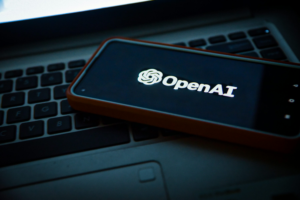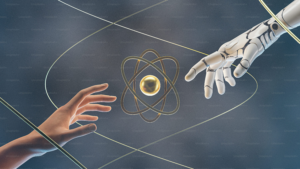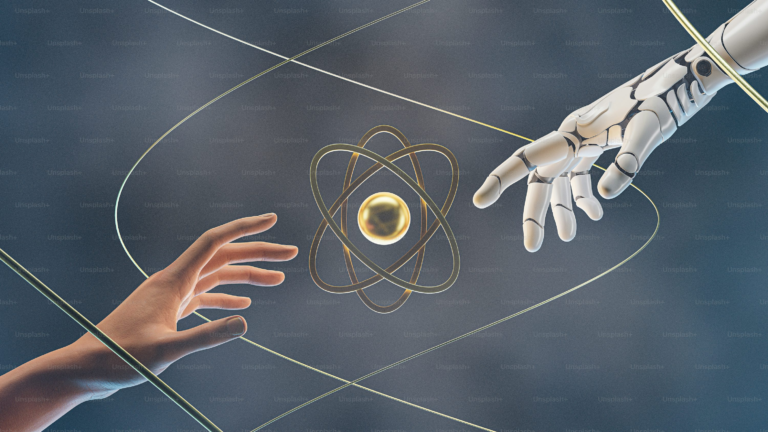As we move closer to the later half of 2025, it’s pretty clear that artificial intelligence isn’t slowing down. We’re on the edge of seeing some big changes, and it’s not just about fancy new tech. These AI innovations to expect in later half of 2025 are going to shake things up in a lot of areas, from how we learn to how we handle our money. It’s a good idea to get a sense of what’s coming, because it’s going to affect all of us, whether we’re ready or not.

Key Takeaways
- AI will change how education works, making learning more personal for students.
- Healthcare will use AI for better diagnosis, but patient data rules might get more complex.
- Financial services will see AI everywhere, from fraud checks to customer help, and even in how investments are made.
- Autonomous vehicles, including cars, trucks, and even spacecraft, will become more common.
- The legal field will use AI for tasks like drafting documents, which could change how law firms operate and how many human lawyers are needed.
Transformative AI Across Key Industries
Revolutionizing Education Through AI
AI is set to change education in big ways. Think about how students learn now—it’s often one-size-fits-all. But with AI, that’s going to be a thing of the past. AI will create learning plans just for you, based on how you learn best. It’ll figure out what you’re good at, where you struggle, and then give you content that makes sense for you. This means no more getting bored because the class is too slow, or feeling lost because it’s too fast. It’s all about making education fit the student, not the other way around. By 2028, schools might look totally different.
Advancing Healthcare Diagnostics with AI
In healthcare, AI is going to be a huge help for doctors. Right now, diagnosing illnesses can be tough, and sometimes, things get missed. AI systems will become a standard tool for doctors and physician assistants. They’ll help with diagnostic work, making it more accurate. This means fewer wrong diagnoses and quicker treatment. Imagine a doctor getting a second opinion from an AI that has looked at millions of cases—that’s a game-changer. However, there are also challenges, like dealing with sensitive patient data and the complex laws around it. This could make things more complicated for hospitals and clinics, and it might even change what patients expect about who owns their medical information.
Innovating Financial Services with AI
Financial services are also getting a big AI makeover. Banks and financial advisors are going to use AI to talk to customers in new ways. This includes things like:
- Monitoring credit scores
- Spotting fraud quickly
- Helping with financial planning
- Handling insurance questions
- Improving customer service
AI will make these interactions much more efficient. It’s not just about chatbots; it’s about AI understanding what you need and giving you answers fast. This means less waiting around and more personalized help. AI will also be used to create more complex financial products and make decisions faster, which could change how we save, invest, and manage our money. The speed of these changes will be noticeable.
The Evolving Landscape of AI Regulation
Navigating the Thicket of AI Law
It’s becoming clear that the legal side of AI is getting really complicated. Governments everywhere, from local towns to big international groups, are trying to figure out how to control AI. In the U.S., we’re seeing a mix of city, state, and federal laws popping up, making it a real maze for businesses. The European Union is also getting ready to roll out its big AI regulation, which many think will set a standard. But even with these efforts, there’s a lot of uncertainty about how all these rules will actually work out. Businesses need to stay on top of these changes to avoid legal headaches.
Global Regulatory Frameworks for AI
Different parts of the world are taking different approaches to AI regulation. Some are focusing on strict rules, while others are trying to encourage innovation with lighter touches. This means a company operating globally might face a patchwork of conflicting requirements. It’s not just about what’s legal, but also what’s ethical and socially acceptable in each region.
- Data privacy laws are a big part of this.
- Rules around algorithmic transparency are emerging.
- There’s a push for accountability in AI systems.
Uncertainty in AI Regulatory Arenas
Even with all the talk about new laws, there’s still a lot up in the air. Big companies are often trying to influence these regulations, sometimes pushing for less strict rules. This creates a dynamic where the final shape of AI law is constantly shifting. It’s like trying to hit a moving target. For anyone working with AI, understanding the regulatory environment is going to be key for the next few years.
The rapid pace of AI development often outstrips the ability of lawmakers to create effective and timely regulations. This gap means that businesses and developers are often operating in a gray area, trying to anticipate future rules while building and deploying new AI systems. This situation demands a proactive approach to compliance and a willingness to adapt quickly as the legal landscape evolves.
Societal Impact of Accelerated AI Adoption

Increased Tempo of Daily Life
Get ready for things to speed up, big time. Every organization, from your local government office to the biggest corporations, is going to be using AI to make decisions faster. This means everything from customer service interactions to how quickly your bank processes a loan application will feel like it’s happening at warp speed. The sheer pace of daily engagements with institutions will accelerate dramatically. It’s not just about convenience; it’s about a fundamental shift in how quickly things get done. We’re talking about a world where waiting for anything becomes a rare occurrence, and the expectation for instant results becomes the norm. This will affect everything from how we shop to how we interact with public services. The pressure to keep up will be real.
Broad Efficiency Gains Across Businesses
Businesses are going to be all-in on AI, especially generative AI. It’s not really an option anymore. Companies have to boost their efficiency and profits, and AI is the clearest path to doing that. If they don’t jump on board, their competitors will, and then they’ll be left in the dust. It’s a pretty simple equation: embrace AI or risk losing out. This means we’ll see AI integrated into almost every part of how businesses operate, from supply chains to marketing. The drive for efficiency will be relentless, pushing companies to adopt AI at an unprecedented rate. This will lead to leaner operations and, ideally, better products and services, but it also means a lot of traditional roles might change or disappear.
The End of Personal Privacy
This is where things get a bit unsettling. AI systems are going to know more about us than we know about ourselves. Think about it: every click, every purchase, every interaction online is data. AI can sift through massive amounts of this data and create incredibly detailed profiles of individuals. Our idea of privacy has already been challenged by technology over the last few decades, but AI takes it to a whole new level. It’s not just about companies collecting data; it’s about AI being able to analyze and predict our behaviors with startling accuracy. It turns out, our commitment to privacy might have been more about technological limitations than a deep ethical stance. As the cost of analyzing personal data drops and more powerful algorithms become widespread, the concept of personal privacy as we know it might just fade away. AI adoption in businesses is already showing how much data is being processed.
The lines between public and private information will blur, and individuals will find themselves in a constant state of being observed and analyzed. This isn’t necessarily malicious; it’s simply a byproduct of AI’s ability to process and understand vast quantities of information. The challenge will be to adapt to a world where personal data is no longer truly private, and to understand the implications of such pervasive knowledge.
The Future of Autonomous Systems

Autonomous Vehicles in Commercial Use
By the later half of 2025, we’re going to see a real uptick in autonomous vehicles being used for business. Think about it: delivery trucks driving themselves, taxis without drivers, and even long-haul freight moving across states with minimal human input. This shift is going to change how goods and people move around, making things faster and, hopefully, safer. Companies are really pushing for this because it cuts down on labor costs and can operate around the clock. It’s not just about cars; we’re talking about a whole new way of doing business on the roads. The logistics industry is going to look totally different.
Advancements in Private Autonomous Transport
For everyday folks, autonomous cars are getting closer to being a normal thing. While fully self-driving cars for everyone might still be a bit off, the tech is getting better fast. We’ll see more advanced driver-assist systems that handle more complex situations, like city driving or tricky parking. It’s not just about convenience; it’s about making driving less stressful and potentially reducing accidents. People are getting used to the idea, and the cars themselves are learning more every day. It’s a slow but steady march toward a future where your car does most of the work.
Spacecraft Autonomy and Cargo Ferries
Beyond Earth, autonomous systems are already a big deal, and they’re only going to get more important. Spacecraft are increasingly operating on their own, handling complex maneuvers and scientific tasks without constant human input. This is especially true for cargo ferries, which are becoming the workhorses of space travel, moving supplies and equipment to orbital stations or even to the Moon. The ability for these craft to operate independently means more missions can happen, and they can go to places that are too risky or too far for human-controlled flights. It’s a quiet revolution happening way above our heads.
When we look at space, the progress is pretty amazing:
- More frequent autonomous resupply missions to the ISS.
- Development of self-navigating lunar landers for future Moon bases.
- Testing of autonomous asteroid mining probes.
- Increased use of AI for real-time decision-making on deep-space missions.
This kind of autonomy is critical for pushing the boundaries of space exploration.
Human-AI Collaboration and Teaming
Augmenting Human Intelligence with AI
AI isn’t just about replacing human jobs; it’s increasingly about making us better at what we do. Think of it as a super-powered assistant that can handle the tedious, data-heavy parts of a task, freeing up human minds for more creative or strategic thinking. This partnership allows humans to focus on higher-level problem-solving and innovation. For example, in design, AI can quickly generate thousands of variations, letting a human designer pick the best ones and refine them. In research, AI can sift through massive datasets in seconds, highlighting patterns that would take a human months to find. It’s about leveraging AI’s speed and processing power to augment our own intelligence, not diminish it. The goal is to create a synergy where the combined output is greater than the sum of its parts. This kind of collaboration is already showing up in fields like mental health aid and scientific discovery.
Managing Societal Fear of AI
Let’s be real, the idea of AI taking over has been a sci-fi staple for decades, and it’s pretty ingrained in our collective consciousness. This fear, while often overblown, is a real hurdle to widespread AI adoption. To manage it, we need to emphasize transparency and control. People need to understand how AI works, what its limitations are, and, most importantly, that humans remain in charge. It’s about showing that AI is a tool, not a master. Public education campaigns, clear ethical guidelines, and visible examples of successful human-AI teaming can help demystify the technology and build trust. If we don’t address these fears head-on, we risk slowing down progress and missing out on the significant benefits AI can bring.
The key to overcoming public apprehension about AI lies in demonstrating its role as a supportive partner rather than a dominant force. When people see AI as an extension of human capability, rather than a replacement, acceptance grows.
The Role of Human Oversight in AI Systems
Even as AI systems become more sophisticated, human oversight remains absolutely critical. This isn’t just about ethical considerations; it’s about practical necessity. AI models, especially those based on machine learning, can sometimes produce unexpected or biased results if not properly monitored. Humans are needed to:
- Define the parameters: Setting the initial goals and constraints for the AI.
- Interpret complex outputs: Understanding nuanced results that AI might not fully grasp.
- Correct errors and biases: Identifying and fixing issues that arise from training data or algorithmic flaws.
- Handle edge cases: Dealing with situations that fall outside the AI’s programmed experience.
- Provide ethical judgment: Making decisions that require moral reasoning beyond algorithmic logic.
This oversight ensures that AI systems operate safely, fairly, and in alignment with human values. It’s a continuous process of monitoring, evaluating, and refining, ensuring that the technology serves humanity effectively.
Measuring Value from Generative AI
Demonstrating Economic Value of GenAI
It’s been a bit of a wild ride trying to figure out if generative AI is actually making a difference where it counts: the bottom line. A lot of folks are confident it is, with some surveys even saying organizations are seeing huge jumps in productivity. But here’s the thing: confidence doesn’t always equal cold, hard data. Very few companies are actually doing the legwork to measure these gains properly. It’s like saying you’re faster because you feel faster, not because you timed yourself. Some studies, like one with programmers, show about a 20% bump in productivity, which is good, but not exactly the
AI’s Influence on Legal Professions
AI-Driven Legal Summaries and Drafting
AI is changing how legal work gets done, especially with things like summarizing documents and drafting legal text. Imagine feeding a mountain of case files into a system, and it spits out a concise summary, highlighting the most important bits. That’s already happening. Lawyers can use AI to quickly get the gist of complex legal arguments or to draft initial versions of contracts and briefs. It’s not perfect, but it gives them a solid starting point, saving a ton of time that used to be spent on tedious research and initial writing. The prompts given to these generative AI systems are key to getting useful output.
Impact on Small and Medium Law Firms
Small and medium-sized law firms are going to feel a big shift. The number of these firms might actually go down over the next five years. Why? Because a small team of just a few people, working with AI systems, can do the work that used to need 10 or even 20 lawyers. They can do it faster and cheaper too. This means firms that adopt AI early will have a huge advantage, while others might struggle to keep up. It’s a bit like how computers changed accounting; those who embraced them thrived.
The legal field is on the cusp of a major transformation, where efficiency and cost-effectiveness will increasingly be driven by technological adoption. Firms that adapt quickly to AI tools will find themselves in a much stronger position, able to offer competitive services with fewer human resources.
Potential Reduction in Human Lawyer Workforce
This is the big one everyone’s talking about. Based on how fast AI has developed recently, and assuming it keeps going at this pace, we could see a significant drop in the number of human lawyers. Some predictions suggest the number of lawyers in the U.S. could be cut by 25% or more by 2028. It’s not about AI replacing every single lawyer, but it will definitely change the types of tasks lawyers focus on. Routine, repetitive work will likely be automated, leaving more complex, strategic, and client-facing roles for humans.
Here’s a quick look at how AI might affect different legal tasks:
- Document Review: AI can review thousands of documents in minutes, identifying relevant information much faster than humans.
- Legal Research: AI tools can quickly pull up relevant statutes, case law, and precedents.
- Contract Analysis: AI can spot inconsistencies or problematic clauses in contracts.
- Predictive Analytics: AI can analyze past case outcomes to predict potential results for new cases.
This doesn’t mean lawyers are obsolete, but their roles will evolve. They’ll become more like supervisors of AI systems, focusing on the nuanced legal arguments and client relationships that AI can’t handle. So, as we look ahead to the latter half of 2025, it’s pretty clear that AI isn’t slowing down. We’re talking about changes that will touch almost everything, from how we work to how we just live our daily lives. It’s a big deal, and honestly, it’s going to be interesting to see how it all plays out. We’ll all be watching to see what happens next.
How will AI change things in the next few years?
AI will change many parts of our lives. It will make daily tasks faster and help businesses work better. But it also brings up questions about privacy and how new rules will be made for this technology.
Which areas will AI affect the most?
AI will have a big impact on several fields. In schools, learning might become more personal for each student. In healthcare, AI could help doctors find out what’s wrong with patients more accurately. For money matters, banks and advisors will use AI to help with things like checking credit or planning finances.
Will AI change the job market?
Yes, AI will definitely change jobs. For example, in law, AI can help with writing documents and summarizing laws, which might mean fewer human lawyers are needed for some tasks. This could lead to a smaller number of lawyers in the future.
What are some examples of AI in action?
AI is already used in many ways, like in smart speakers (like Alexa) and recommendation systems (like Netflix). Soon, we’ll see more self-driving cars, trucks, and even spacecraft that can move on their own. These are big steps in how AI will be used.
What are the social impacts of AI?
As AI becomes more common, our lives might feel like they’re speeding up because decisions will be made much faster. Businesses will use AI to be more efficient and make more money. However, this could also mean that our personal information might not be as private as it used to be.
How will governments control AI?
Governments around the world are trying to figure out how to make rules for AI. This means there will be many new laws about how AI can be used, which could make things complicated for businesses. It’s still unclear exactly what these rules will look like.








